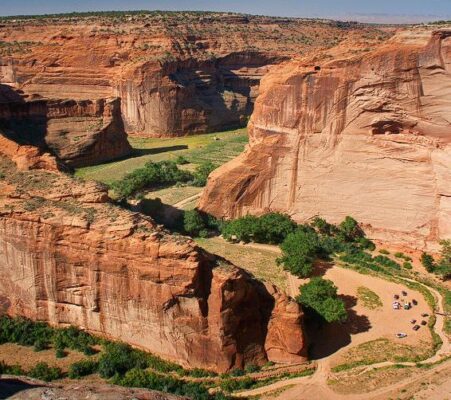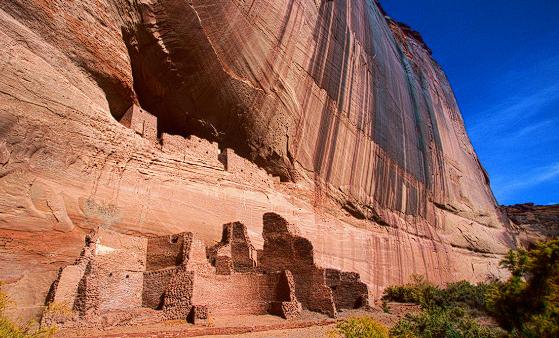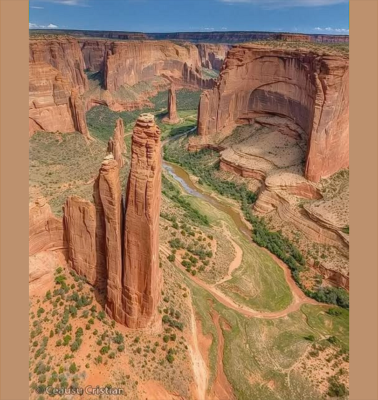Introduction
Nestled within the breathtaking landscapes of Canyon de Chelly National Monument in Arizona, Spider Rock is an awe-inspiring natural wonder. Standing at approximately 700 feet (213 meters), this towering sandstone spire holds deep cultural and spiritual significance for the Navajo people. The canyon’s stunning red rock formations, winding rivers, and rich history make it a must-visit destination for adventurers and history enthusiasts alike.
The Geological Marvel of Spider Rock
Formation and Composition
Spider Rock is composed of Entrada Sandstone, a type of rock formed over millions of years through the gradual deposition of sand and sediment. Erosion from wind and water sculpted the towering formation we see today, making it one of the most striking landmarks in the American Southwest.
The Role of Erosion in Shaping the Landscape
Canyon de Chelly itself is a product of millions of years of geological activity. The canyon was carved by the flow of the Chinle Wash and the erosive power of wind and rain. Over time, these forces exposed layers of ancient rock, giving rise to dramatic cliffs, deep gorges, and formations like Spider Rock.

Cultural and Mythological Significance
Navajo Legends and Spider Woman
According to Navajo mythology, Spider Rock is believed to be the home of Spider Woman, a powerful and revered deity. Spider Woman is said to have taught the Navajo people the art of weaving, an essential tradition that remains a cornerstone of their culture. The legend also tells of how she used the towering spire to discipline disobedient children, adding a mystical element to the rock’s grandeur.
Spiritual and Historical Importance
For generations, Spider Rock has been a sacred site for the Navajo Nation. The formation is a reminder of the tribe’s deep connection to nature, spirituality, and storytelling. Even today, Navajo elders pass down stories about Spider Woman, reinforcing the cultural significance of the canyon and its geological wonders.
Exploring Canyon de Chelly
Visitor Experience and Scenic Overlooks
Canyon de Chelly offers several breathtaking viewpoints, with the Spider Rock Overlook providing one of the most stunning perspectives. From this vantage point, visitors can take in the vast canyon landscape, observe the towering spire, and capture stunning photographs of the natural beauty.
Guided Tours and Hiking Opportunities
While some areas of Canyon de Chelly can be explored independently, guided tours led by Navajo guides provide deeper insights into the history, culture, and legends surrounding Spider Rock. Visitors can embark on jeep tours, horseback rides, or hiking excursions to explore ancient ruins, petroglyphs, and hidden gems within the canyon.

The Rich History of Canyon de Chelly
Ancient Inhabitants and Cliff Dwellings
Long before European explorers arrived, the Ancestral Puebloans (Anasazi) called Canyon de Chelly home. They built cliff dwellings along the canyon walls, leaving behind remarkable structures such as the White House Ruins. These ancient settlements provide a glimpse into the daily lives and survival strategies of early Native American civilizations.
Navajo Heritage and Historical Events
Canyon de Chelly has been an integral part of Navajo history for centuries. It served as a refuge for the Navajo people during times of conflict, particularly during the tragic Long Walk of 1864, when they were forcibly removed from their land by the U.S. government. Today, the canyon remains an active part of Navajo life, with many families still residing within its boundaries.
Best Times to Visit and Photography Tips
Ideal Seasons for Exploration
The best times to visit Spider Rock and Canyon de Chelly are during the spring (March to May) and fall (September to November). These seasons offer mild temperatures, making it easier to hike and explore the rugged terrain without the extreme heat of the summer or the cold of winter.
Capturing the Perfect Shot
Photographers looking to capture Spider Rock in all its glory should aim to visit during sunrise or sunset. The golden light enhances the red hues of the sandstone, creating a mesmerizing contrast against the sky. A wide-angle lens is ideal for capturing the vastness of the canyon, while a telephoto lens can highlight the intricate details of the rock formations.

Preserving the Beauty of Canyon de Chelly
Respecting Navajo Lands and Traditions
Since Canyon de Chelly is located within the Navajo Nation, visitors should be mindful of cultural traditions and respect the land. Following designated trails, seeking permission for guided tours, and avoiding climbing on sacred rock formations are essential practices for responsible tourism.
Conservation Efforts and Sustainable Travel
Efforts to preserve Canyon de Chelly’s fragile ecosystem include minimizing human impact, reducing litter, and supporting eco-friendly initiatives. Travelers can contribute by staying on marked paths, refraining from disturbing wildlife, and choosing sustainable travel options when visiting the area.
Conclusion
Spider Rock stands as a symbol of natural wonder, cultural heritage, and spiritual significance. Whether you’re drawn by its geological marvels, intrigued by Navajo legends, or eager to explore the breathtaking landscapes of Canyon de Chelly, this iconic landmark offers an unforgettable experience. By visiting responsibly and appreciating its history, travelers can help ensure that Spider Rock and its surrounding canyon remain preserved for future generations to admire and cherish.

CÁC TIN KHÁC
Mary Walton: The Forgotten Inventor Who Helped Clean Up America’s Cities
Tomb of Queen Nefertari in the Valley of the Queens, Egypt
Discover the Hypostyle Hall of the Temple of Hathor at Dendera
Venus de Losange: Unveiling the Mystery of a 20,000-Year-Old Paleolithic Icon